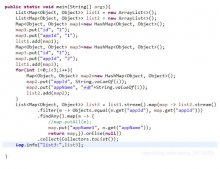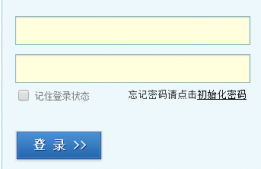
概述
LinkedList是一种可以在任何位置进行高效地插入和移除操作的有序序列,它是基于双向链表实现的,是线程不安全的,允许元素为null的双向链表。
源码分析
变量
/** * 集合元素数量 **/ transient int size = 0; /** * 指向第一个节点的指针 * Invariant: (first == null && last == null) || * (first.prev == null && first.item != null) */ transient Node first; /** * 指向最后一个节点的指针 * Invariant: (first == null && last == null) || * (last.next == null && last.item != null) */ transient Node last;
构造方法
/** * 无参构造方法 */ public LinkedList() { } /** * 将集合c所有元素插入链表中 */ public LinkedList(Collectionc) { this(); addAll(c); }
Node节点
private static class Node { // 值 E item; // 后继 Node next; // 前驱 Node prev; Node(Node prev, E element, Node next) { this.item = element; this.next = next; this.prev = prev; } }
因为一个Node既有prev也有next,所以证明它是一个双向链表。
添加元素
addAll(Collection c)
将集合c添加到链表,如果不传index,则默认是添加到尾部。如果调用addAll(int index, Collection c)方法,则添加到index后面。
/** * 将集合添加到链尾 */ public boolean addAll(Collectionc) { return addAll(size, c); } /** * */ public boolean addAll(int index, Collectionc) { checkPositionIndex(index); // 拿到目标集合数组 Object[] a = c.toArray(); //新增元素的数量 int numNew = a.length; //如果新增元素数量为0,则不增加,并返回false if (numNew == 0) return false; //定义index节点的前置节点,后置节点 Node pred, succ; // 判断是否是链表尾部,如果是:在链表尾部追加数据 //尾部的后置节点一定是null,前置节点是队尾 if (index == size) { succ = null; pred = last; } else { // 如果不在链表末端(而在中间部位) // 取出index节点,并作为后继节点 succ = node(index); // index节点的前节点 作为前驱节点 pred = succ.prev; } // 链表批量增加,是靠for循环遍历原数组,依次执行插入节点操作 for (Object o : a) { @SuppressWarnings("unchecked") // 类型转换 E e = (E) o; // 前置节点为pred,后置节点为null,当前节点值为e的节点newNode Node newNode = new Node<>(pred, e, null); // 如果前置节点为空, 则newNode为头节点,否则为pred的next节点 if (pred == null) first = newNode; else pred.next = newNode; pred = newNode; } // 循环结束后,如果后置节点是null,说明此时是在队尾追加的 if (succ == null) { // 设置尾节点 last = pred; } else { //否则是在队中插入的节点 ,更新前置节点 后置节点 pred.next = succ; succ.prev = pred; } // 修改数量size size += numNew; //修改modCount modCount++; return true; } /** * 取出index节点 */ Node node(int index) { // assert isElementIndex(index); // 如果index 小于 size/2,则从头部开始找 if (index < (size >> 1)) { // 把头节点赋值给x Node x = first; for (int i = 0; i < index; i++) // x=x的下一个节点 x = x.next; return x; } else { // 如果index 大与等于 size/2,则从后面开始找 Node x = last; for (int i = size - 1; i > index; i--) x = x.prev; return x; } } // 检测index位置是否合法 private void checkPositionIndex(int index) { if (!isPositionIndex(index)) throw new IndexOutOfBoundsException(outOfBoundsMsg(index)); } // 检测index位置是否合法 private boolean isPositionIndex(int index) { return index >= 0 && index <= size; }
假设我们要在index=2处添加{1,2}到链表中,图解如下:
第一步:拿到index=2的前驱节点 prev=ele1。
第二步:遍历集合prev.next=newNode,并实时更新prev节点以便下一次。 遍历:prev=newNode
第三步:将index=2的节点ele2接上:prev.next=ele2,ele2.prev=prev。
注意node(index)方法:寻找处于index的节点,有一个小优化,结点在前半段则从头开始遍历,在后半段则从尾开始遍历,这样就保证了只需要遍历最多一半结点就可以找到指定索引的结点。
addFirst(E e)方法
将e元素添加到链表并设置其为头节点(first)。
public void addFirst(E e) { linkFirst(e); } //将e链接成列表的第一个元素 private void linkFirst(E e) { final Node f = first; // 前驱为空,值为e,后继为f final Node newNode = new Node<>(null, e, f); first = newNode; //若f为空,则表明列表中还没有元素,last也应该指向newNode if (f == null) last = newNode; else //否则,前first的前驱指向newNode f.prev = newNode; size++; modCount++; }
-
拿到first节点命名为f。
-
新创建一个节点newNode设置其next节点为f节点。
-
将newNode赋值给first。
-
若f为空,则表明列表中还没有元素,last也应该指向newNode;否则,前first的前驱指向newNode。
addLast(E e)方法
将e元素添加到链表并设置其为尾节点(last)。
public void addLast(E e) { linkLast(e); } /** * 将e链接成列表的last元素 */ void linkLast(E e) { final Node l = last; // 前驱为前last,值为e,后继为null final Node newNode = new Node<>(l, e, null); last = newNode; //最后一个节点为空,说明列表中无元素 if (l == null) //first同样指向此节点 first = newNode; else //否则,前last的后继指向当前节点 l.next = newNode; size++; modCount++; }
过程与linkFirst()方法类似,这里略过。
add(E e)方法
在尾部追加元素e。
public boolean add(E e) { linkLast(e); return true; } void linkLast(E e) { final Node l = last; // 前驱为前last,值为e,后继为null final Node newNode = new Node<>(l, e, null); last = newNode; //最后一个节点为空,说明列表中无元素 if (l == null) //first同样指向此节点 first = newNode; else //否则,前last的后继指向当前节点 l.next = newNode; size++; modCount++; }
add(int index, E element)方法
在链表的index处添加元素element.
public void add(int index, E element) { checkPositionIndex(index); if (index == size) linkLast(element); else linkBefore(element, node(index)); } /** * 在succ节点前增加元素e(succ不能为空) */ void linkBefore(E e, Node succ) { // assert succ != null; // 拿到succ的前驱 final Node pred = succ.prev; // 新new节点:前驱为pred,值为e,后继为succ final Node newNode = new Node<>(pred, e, succ); // 将succ的前驱指向当前节点 succ.prev = newNode; // pred为空,说明此时succ为首节点 if (pred == null) // 指向当前节点 first = newNode; else // 否则,将succ之前的前驱的后继指向当前节点 pred.next = newNode; size++; modCount++; }
linkLast方法上文有讲。 linkBefore(E e, Node succ)方法步骤:
-
拿到succ的前驱节点。
-
新new节点:前驱为pred,值为e,后继为succ : Node<>(pred, e, succ)。
-
将succ的前驱指向当前节点。
-
pred为空,说明此时succ为首节点,first指向当前节点;否则,将succ之前的前驱的后继指向当前节点。
5、获取/查询元素
get(int index)方法
根据索引获取链表中的元素。
public E get(int index) { checkElementIndex(index); return node(index).item; } // 检测index合法性 private void checkElementIndex(int index) { if (!isElementIndex(index)) throw new IndexOutOfBoundsException(outOfBoundsMsg(index)); } // 根据index 获取元素 Node node(int index) { // assert isElementIndex(index); if (index < (size >> 1)) { Node x = first; for (int i = 0; i < index; i++) x = x.next; return x; } else { Node x = last; for (int i = size - 1; i > index; i--) x = x.prev; return x; } }
node方法上文有详细讲解,这里不做介绍。
getFirst()方法
获取头节点。
public E getFirst() { final Node f = first; if (f == null) throw new NoSuchElementException(); return f.item; }
getLast()方法
获取尾节点。
public E getLast() { final Node l = last; if (l == null) throw new NoSuchElementException(); return l.item; }
6、删除元素
remove(Object o)
根据Object对象删除元素。
public boolean remove(Object o) { // 如果o是空 if (o == null) { // 遍历链表查找 item==null 并执行unlink(x)方法删除 for (Node x = first; x != null; x = x.next) { if (x.item == null) { unlink(x); return true; } } } else { for (Node x = first; x != null; x = x.next) { if (o.equals(x.item)) { unlink(x); return true; } } } return false; } E unlink(Node x) { // assert x != null; // 保存x的元素值 final E element = x.item; //保存x的后继 final Node next = x.next; //保存x的前驱 final Node prev = x.prev; //如果前驱为null,说明x为首节点,first指向x的后继 if (prev == null) { first = next; } else { //x的前驱的后继指向x的后继,即略过了x prev.next = next; // x.prev已无用处,置空引用 x.prev = null; } // 后继为null,说明x为尾节点 if (next == null) { // last指向x的前驱 last = prev; } else { // x的后继的前驱指向x的前驱,即略过了x next.prev = prev; // x.next已无用处,置空引用 x.next = null; } // 引用置空 x.item = null; size--; modCount++; // 返回所删除的节点的元素值 return element; }
-
遍历链表查找 item==null 并执行unlink(x)方法删除。
-
如果前驱为null,说明x为首节点,first指向x的后继,x的前驱的后继指向x的后继,即略过了x。
-
如果后继为null,说明x为尾节点,last指向x的前驱;否则x的后继的前驱指向x的前驱,即略过了x,置空x.next。
-
引用置空:x.item = null。
-
图解。
remove(int index)方法
根据链表的索引删除元素。
public E remove(int index) { checkElementIndex(index); //node(index)会返回index对应的元素 return unlink(node(index)); } E unlink(Node x) 方法上文有详解。
removeFirst()方法
删除头节点。
public E removeFirst() { final Node f = first; if (f == null) throw new NoSuchElementException(); return unlinkFirst(f); } private E unlinkFirst(Node f) { // assert f == first && f != null; //取出首节点中的元素 final E element = f.item; //取出首节点中的后继 final Node next = f.next; f.item = null; f.next = null; // help GC // first指向前first的后继,也就是列表中的2号位 first = next; //如果此时2号位为空,那么列表中此时已无节点 if (next == null) //last指向null last = null; else // 首节点无前驱 next.prev = null; size--; modCount++; return element; }
原理与添加头节点类似。
removeLast()方法
删除尾节点(last)
public E removeLast() { final Node l = last; if (l == null) throw new NoSuchElementException(); return unlinkLast(l); } private E unlinkLast(Node l) { // assert l == last && l != null; // 取出尾节点中的元素 final E element = l.item; // 取出尾节点中的后继 final Node prev = l.prev; l.item = null; l.prev = null; // help GC // last指向前last的前驱,也就是列表中的倒数2号位 last = prev; // 如果此时倒数2号位为空,那么列表中已无节点 if (prev == null) // first指向null first = null; else // 尾节点无后继 prev.next = null; size--; modCount++; // 返回尾节点保存的元素值 return element; }
7、修改元素
修改元素比较简单,先找到index对应节点,然后对值进行修改。
public E set(int index, E element) { checkElementIndex(index); // 获取到需要修改元素的节点 Node x = node(index); // 保存之前的值 E oldVal = x.item; // 执行修改 x.item = element; // 返回旧值 return oldVal; }
8、与ArrayList的对比
优点:
缺点:
原文地址:https://www.toutiao.com/article/7275759948074730036/
















